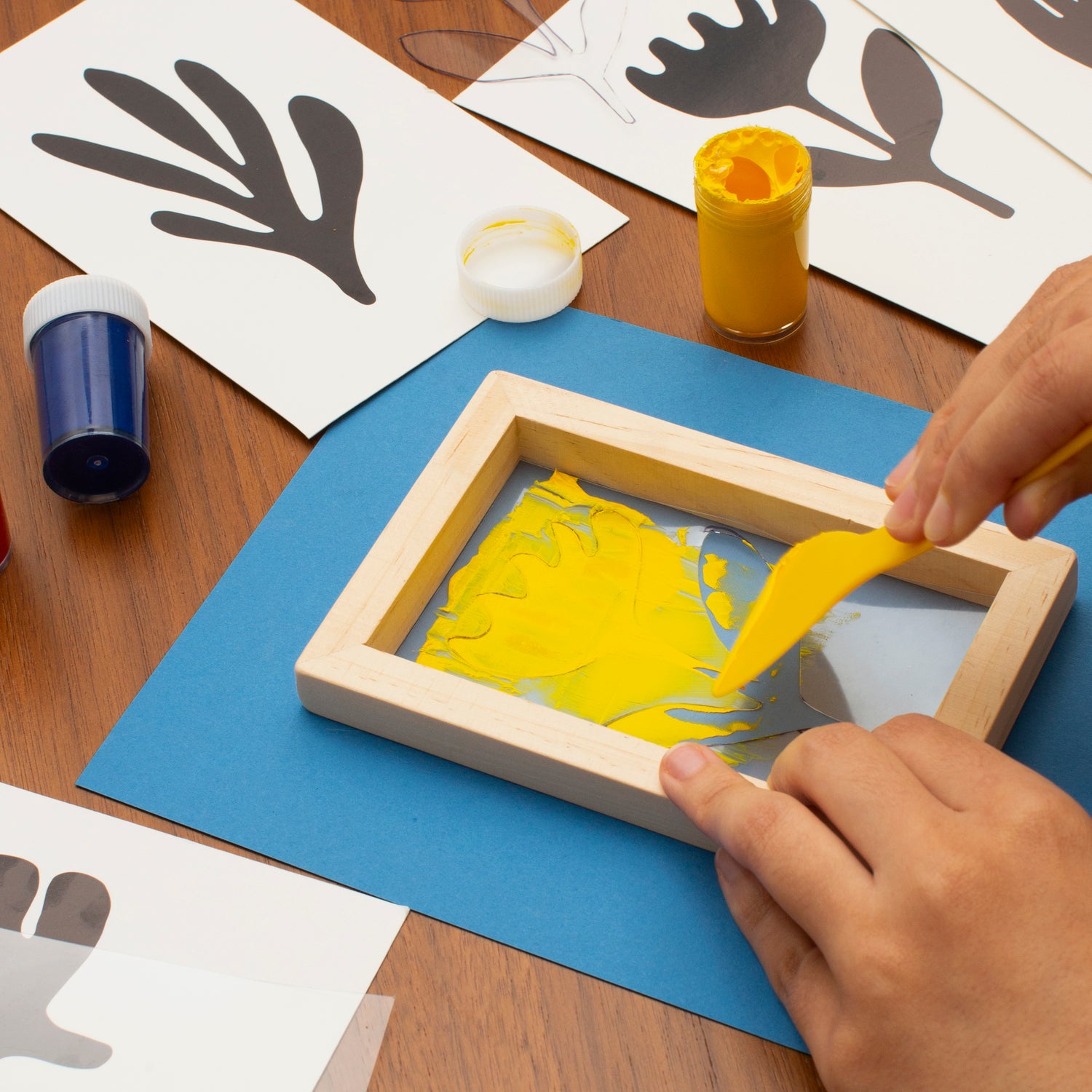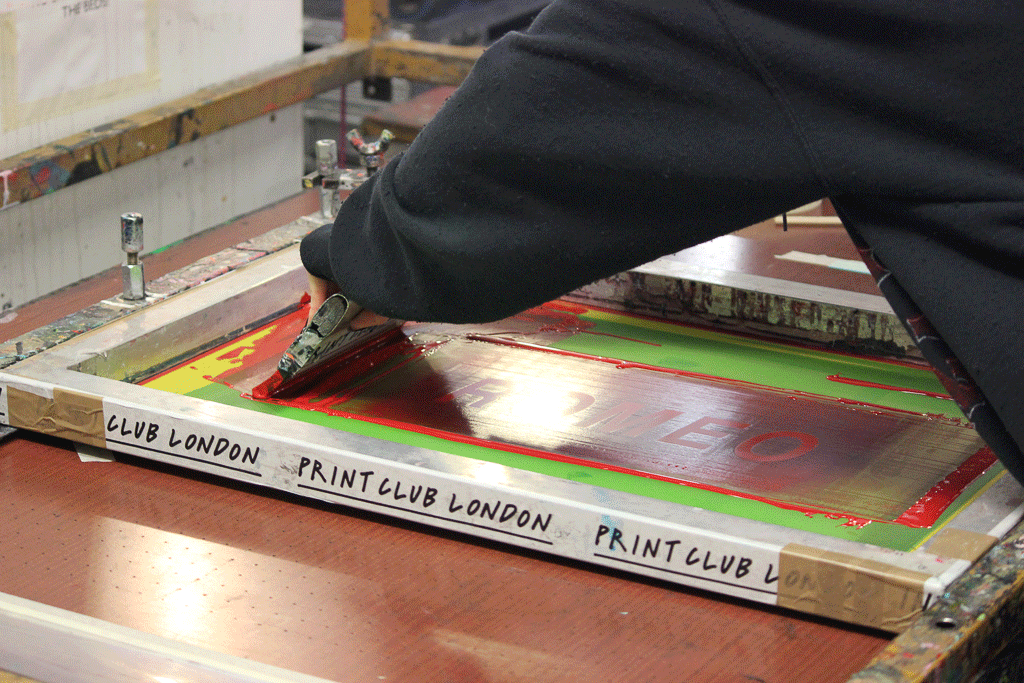ChatGPT said: How to get quick answers through 10:9 Design contact for your next order
Discover the Numerous Kinds of Screen Printing Techniques for Your Following Task
Screen printing supplies a diverse variety of techniques that can improve any innovative project. From conventional methods like serigraphy to contemporary advancements such as direct-to-garment printing, each method has its distinct benefits. Specialized alternatives, including eco-friendly and metallic inks, present also much more opportunities. Recognizing these methods can greatly impact the last outcome. Nevertheless, the challenge hinges on picking the most suitable approach for certain needs and desired results. What elements should one take into consideration?

The Basics of Screen Printing
Although screen printing may seem complex, it is basically a straightforward process that includes moving ink with a mesh screen onto various surfaces. The method begins with the creation of a pattern, which specifies the design to be published. This stencil is affixed to a mesh screen, typically constructed from polyester or nylon. When the stencil remains in location, ink is related to the screen and pushed via the mesh making use of a squeegee, causing the preferred pattern being published on the underlying product.
Screen printing can be carried out on a variety of substrates, including plastic, material, and paper, making it a flexible selection for numerous projects. The process enables elaborate designs and dynamic shades, making it prominent in markets such as marketing, fashion, and art. Recognizing these basics equips people with the foundational knowledge called for to discover more advanced strategies in screen printing.
Traditional Screen Printing Techniques
Typical screen printing strategies have actually been utilized for centuries, preserving the workmanship and creativity of this method. This approach uses a mesh screen to transfer ink onto a substratum, such as textile or paper, enabling for vibrant and durable layouts. The procedure begins with developing a stencil, which obstructs specific areas of the screen to regulate where the ink will be used.
One popular technique is serigraphy, commonly utilized for limited editions and artistic prints. Another is using water-based inks, which are environment-friendly and supply a soft feeling on textiles - 10:9 Design Screen Printing Texas. Additionally, conventional approaches can include hand-operated printing, where artisans apply ink with a squeegee, making sure accuracy and attention to detail
These strategies remain valued in the market for their tactile top quality and the distinct structures they create, interesting both makers and customers that value the heritage of screen printing.
Digital Screen Printing Innovations
As the need for faster manufacturing and customization in the printing industry has actually surged, electronic screen printing developments have arised as a game-changer. This technology blends conventional screen printing techniques with digital processes, enabling for rapid prototyping and complex layouts that were previously challenging to accomplish. One substantial development is the introduction of direct-to-garment (DTG) printing, which assists in high-quality, full-color prints on various fabrics without the demand for displays. Furthermore, improvements in ink solutions have actually led to environment-friendly alternatives that keep lively shades while reducing environmental impact. Making use of automated systems better enhances manufacturing, decreasing labor expenses and improving precision. These innovations not just deal with small set orders and individualized designs yet likewise allow for quicker turn-around times, making them suitable for organizations concentrated on meeting consumer needs in a busy market. Digital screen printing, as a result, represents an important evolution in the domain of printing techniques.
Specialty Screen Printing Approaches
Exploring specialty screen printing methods reveals a diverse range of methods that push the limits of creativity and capability in the printing industry. Among these, glow-in-the-dark inks offer a special aesthetic result, making styles come active in low-light conditions. Metallic inks, understood for their shimmering coating, include a touch of deluxe to printed materials. An additional innovative technique is discharge printing, which removes dye from the fabric as opposed to adding ink, causing a soft, vintage feeling. High-density printing develops an elevated appearance on the surface area, boosting tactile engagement. In addition, water-based inks are acquiring appeal for their vivid colors and lowered ecological impact. Each of these specialty methods provides to particular design demands, making it possible for musicians and brand names to develop standout products that reverberate with their audiences. By leveraging these methods, services can boost their screen printing tasks to new elevations, ensuring unforgettable impressions.
Eco-Friendly Screen Printing Options
Green screen printing options are obtaining traction as the market moves in the direction of sustainability. Lasting ink options and using biodegradable materials are key parts in lowering the ecological impact of the printing procedure. By embracing these practices, screen printers can add to an extra lasting future while preserving top quality outcomes.
Lasting Ink Choices

Biodegradable Materials Usage
As the screen printing market evolves, the consolidation of eco-friendly materials is becoming increasingly essential for ecologically aware practices. Manufacturers and designers are now exploring inks and substratums made from all-natural, renewable energies that decay a lot more efficiently than traditional equivalents. These eco-friendly alternatives reduce plastic waste and decrease ecological influence, straightening with the growing need for sustainable products.
Typical instances consist of water-based inks and natural cotton textiles, both of which lessen unsafe chemicals and promote eco-friendliness. Brand names that adopt these materials often enhance their market appeal, drawing in customers who focus on sustainability. As awareness of ecological problems continues to rise, the change towards biodegradable materials in screen printing is most likely to gain energy, cultivating a greener sector criterion.
Selecting the Right Strategy for Your Job
Exactly how can one figure out one of the most suitable screen printing method for a particular task? The decision rests on numerous elements, consisting of the material to be printed on, the intricacy of the design, and the preferred manufacturing quantity - 10:9 Design reviews. Direct-to-garment printing is perfect for detailed styles with various shades, while typical screen printing stands out for bigger runs of simpler graphics.
Furthermore, consideration of the end-use of the published product is crucial. For outdoor applications, techniques that provide longevity and weather resistance, such as plastisol ink, might be chosen. On the other hand, environmentally-conscious projects may benefit from water-based inks or eco-friendly products.
Inevitably, comprehending the job's distinct requirements permits for an informed selection, guaranteeing both aesthetic charm and practical longevity. By examining style intricacy, material compatibility, and manufacturing scale, one can efficiently choose the most proper screen printing method to meet their task's goals.
Often Asked Questions
What Is the Background of Screen Printing?
Screen printing stemmed in ancient China around 1000 AD, progressing via Japan and Europe. By the 20th century, it came to be popular in business art and style, reinventing exactly how layouts were produced and dispersed worldwide.

Just how Do I Prepare Art Work for Screen Printing?
To prepare artwork for screen printing, one should guarantee high resolution, use a suitable color setting, develop different layers for each shade, and convert message to describes, ensuring compatibility with the printing procedure and desired result.
What Products Are Finest for Screen Printing?
The very best materials for screen printing include high-grade inks, long lasting screens, and appropriate substrates like cotton, polyester, or blends. In addition, using ideal solution and mops can improve the printing process and outcomes.
Can I Evaluate Publish in the house?
Yes, screen printing in the house is possible. With the ideal materials, arrangement, and techniques, people can produce top notch prints. Mindful consideration of office and equipment is important for effective outcomes.
What Prevail Errors in Screen Printing?
Usual blunders in screen printing include improper exposure times, insufficient ink consistency, imbalance of screens, not enough cleansing of materials, and disregarding to check prints. These errors can compromise the quality and precision of the last product.
Screen printing might seem facility, it is fundamentally an uncomplicated procedure that entails transferring ink via a mesh screen onto different surfaces. As the demand for faster manufacturing and personalization in the printing market has actually surged, digital screen printing technologies have actually emerged as a game-changer. Discovering specialty screen printing techniques exposes a diverse array of techniques that press the limits of imagination and functionality in the printing sector. The best products for screen printing include premium inks, sturdy screens, and suitable substrates like cotton, polyester, or blends (10:9 Design contact). Usual mistakes in screen printing consist of incorrect exposure times, insufficient ink consistency, misalignment of screens, inadequate cleaning of products, and disregarding to examine prints